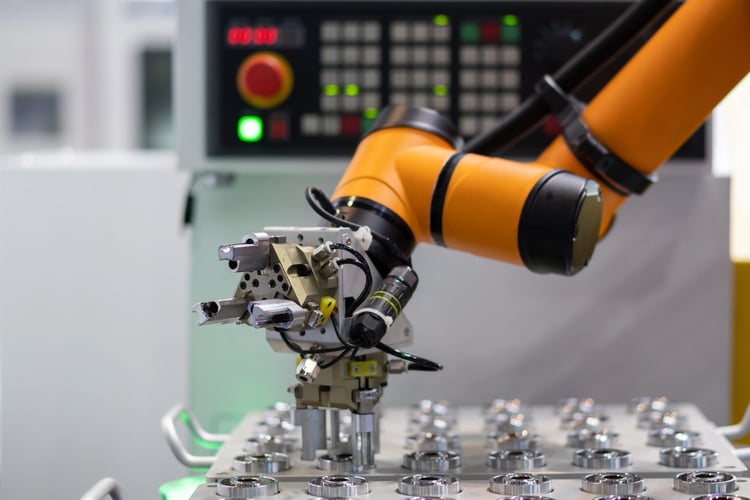In 2023, monthly manufacturing job vacancies in the US averaged around 620,000 – a 44 percent increase in openings versus the years immediately preceding the start of the COVID-19 pandemic. This labor gap is predicted to rapidly grow over the next five years as the perfect storm of increasing demand and a shrinking workforce is brewing.

Currently, there are efforts in the US to reshore many manufacturing jobs and accelerate the growth of several advanced manufacturing segments such as semiconductor and clean energy. At the same time, many of the Baby Boomers working in manufacturing are reaching retirement age while the majority of Gen Zers are not interested in pursuing a career in industrial work. Together, these trends are setting the industry up for the potential to leave more than 2.1 million manufacturing jobs unfilled by 2030.
If this sounds overwhelming to you as a manufacturer, it is time to reconsider the traditional path of solely hiring humans to fill many of these vacancies, and instead consider introducing a new member to your operations team – the steel collar worker, aka industrial robots. As reliable skilled labor becomes one of your scarcer resources, now is a great time to evaluate the opportunities for automation by incorporating industrial robots into your production process. Beyond the tremendous benefit of permanently filling many hard-to-hire-for positions, there are many additional benefits industrial robots can bring to your workforce.
Assign the Dirty and Dangerous Jobs to the Robots
It’s no secret that your production process likely requires humans to perform many tasks in hot, dirty, and potentially hazardous environments. While it’s unlikely that you can completely revamp your work environment, you can much more easily evaluate your production process to see where there are opportunities to automate some of the less desirable and dangerous tasks. Robots have no issues working in the deafening, filthy, and non-temperature-controlled environments that can be uncomfortable or even dangerous for humans to work in. Just think how much safer it would be if you had a robot packaging a highly flammable product such as toner into cartridges instead of a human.
Leave the Menial Tasks to the Robots
Robots also excel at performing the monotonous jobs that most people not only find mind-numbing but are also prone to human error. This includes tasks such as sorting raw materials, placing containers on conveyors to be filled, or palletizing finished goods. A pick and place robotic cell added to the line for example will ensure containers are placed in the exact right location on the conveyor every time and, aside from routine maintenance, never need to take a break.
Refocus Your Valuable Human Workforce
As more mundane tasks are automated, which will inherently increase productivity and quality, there is an opportunity to refocus your valuable human workforce on more meaningful tasks geared towards further optimizing production. From performing in-depth data analysis to identify production bottlenecks to focusing on streamlining inventory management and logistics, there are likely many process optimization roles in your manufacturing plant that are currently being sacrificed just so you can get all the essential day-to-day production tasks done.
Robots Require a New Class of Skilled Jobs
Beyond offering improvements to workers on the factory floor, as more manufacturers automate portions of their production process using industrial robots, demand for additional skilled jobs will continue to increase. From initial configuration to performing maintenance on the robots, as the number of industrial robots in use on factory floors grows, so does the need for a number of skilled jobs such as maintenance technicians and engineers.
Let ACE Help Amp Up Your Automation
If you are spending countless hours attempting to fill vacancies on your plant floor with little success, let’s chat. We can assess your production process to identify opportunities for incorporating automation that will let you assign the dull and dangerous tasks to the robots, allowing you to better capitalize on the more valuable skills your employees bring to your production processes.

